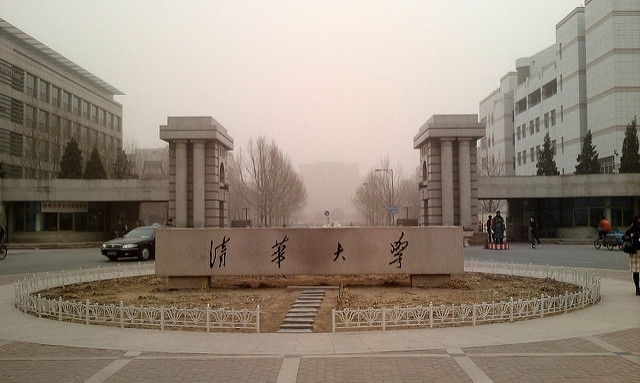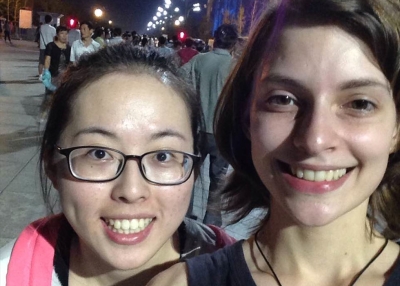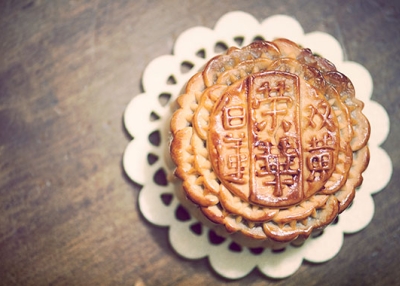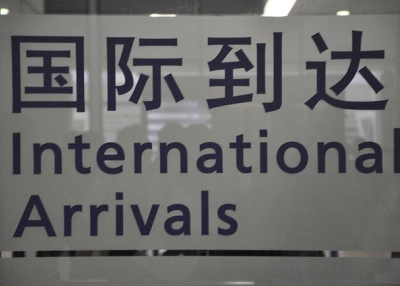China's Education System: The Oldest in the World

By Chelsea Shieh
It may sound incredible, but China’s formal education system—the oldest in the world—was established nearly two millennia ago. The imperial education and examination system in China is estimated to have been founded as early as the Han dynasty (206 BCE to 220 CE), and is strongly based on meritocratic ideals that persist in Chinese education to this day. Because of China’s expansion over the centuries, its education system reflects the country’s need to find the most efficient and fair way to measure students’ academic capabilities.
One of the longest legacies of the imperial education tradition is the (in)famous Gaokao, or the National College Entrance Examination, which is the sole determining factor of a student’s eligibility to enroll in universities. Every year on June 7 and 8, nine million students take the Gaokao. In the U.S., there are multiple elements in a student’s college application, including a transcript, personal essays, SAT/ACT scores, and recommendation letters; in China, a student’s score on the Gaokao is the only factor that determines their eligibility to enroll in university. The higher their score, the more prestigious the university they can attend. This might sound extremely stressful and intimidating—indeed, for most Chinese secondary school students, the Gaokao is the culmination of their past twelve years of schooling.
Prior to taking the exam, students must choose between the humanities track and science track. This decision is usually made in a student’s first year of high school, and it determines which subject they will be tested on in the Gaokao, in addition to the three mandatory subjects of Chinese, math, and a foreign language. The Gaokao is administered only once a year, making it one of the highest pressure examinations in the entire world. Those who don’t perform well on this high-stakes exam end up with few options—many will spend the following year studying in preparation to re-take the exam, while others choose to find low-level jobs and opt out of higher education altogether. Nevertheless, in a country that prizes education, success or failure on the Gaokao is viewed as the greatest determining factor of how a person will live out the rest of his or her life.
But what happens to Chinese students after they get into college? As you may expect, Chinese students tend to become more laid-back after they enter college, given that they’ve overcome the humongous obstacle of the Gaokao. They now have more time to join extracurricular activities, hang out with friends, or even pursue romantic relationships. For students in China, high school is definitely the roughest part of their education experience; after working so hard, perhaps they deserve to have a little more freedom and fun in their college years!
China’s higher education statistics have exploded in the past twenty-five years. In 1990, only four percent of 18 to 22 year olds were pursuing higher education; by 2014, that number had increased almost tenfold, to 37.5 percent. This education boom has to do with a number of factors, including a rapidly growing middle class, economic expansion, and government policies. As of 2016, there are approximately seven million Chinese graduates of higher education that are seeking jobs in the labor market. However, there are drawbacks to this education boom as well. The government has been criticized for focusing too much on the top-tier universities, and creating an imbalance in the quality of education available across the country.
Let’s take a closer look at China’s university education system, which is currently the largest higher education system in the world. Despite its long history, China’s present-day university system has been strongly influenced by Western education traditions. Academic departments, requirements, and student living are all based on the Western style of university education. Nevertheless, the Chinese university system still contains qualities unique to China’s history and economic development. For example, the majority of the best universities in China are all public universities that are government-funded. Private universities are beginning to increase in number, but they have a mixed reputation and variable quality. Another unique aspect of Chinese university education lies in the teaching and learning experience. Professors in China have historically been highly venerated, and to this day students are still expected to respect their teachers to a great degree. This, as you may imagine, creates a very different learning experience for students at Chinese universities.
In fact, there has been growing criticism and concern, from both foreigners and Chinese citizens alike, about the quality and methods of teaching and learning at Chinese higher education institutions. The desire for China’s economy to leave the manufacturing stage and establish itself as the most important and powerful economy in the world has created a strong desire to see China put out innovators and entrepreneurs to establish the Apple or Google of China. Yet many young Chinese people lament China’s relative lack of equivalent figures. They criticize Chinese-style education as suppressing creativity and individuality. Rote memorization, a core teaching method in Chinese schools, is the main culprit in their eyes.
In a study on the teaching quality of higher education in China, published in the journal Assessment & Evaluation in Higher Education, scholars found that many students complained of teachers failing to train independent thinking in their students, and prioritizing a “surface” approach to learning as opposed to striving for a “deep” understanding of the material. So why can’t these Chinese professors change their teaching methods? The answer could lie in the Confucian concept mentioned earlier—teachers have the ability to lead others toward knowledge and a better life. This idea, while it has morphed and been distilled throughout the centuries, still exists in the minds of many Chinese teachers. Thus, many Chinese teachers and professors teach in a lecture style, not allowing much room or time for questions or discussion with the students. Students are still mainly expected to be deferential toward their teachers by listening to them.
Chinese students are increasingly seeking options to customize their education to their best needs and interests. In fact, many Chinese students are increasingly opting to study abroad at foreign universities; the U.S. in particular is the top destination for these students. Not only are these students turned off by the fierce competition for admission to top-tier Chinese universities, but also they may be drawn to the prestige and reputation of American universities, as well as the more holistic teaching style of American education that privileges class participation and seminar discussions. Also, China’s rapid economic growth has also resulted in many Chinese citizens able to afford the tuition of studying abroad. Hence, there are currently more than 300,000 Chinese students studying in the U.S., enrolled in both undergraduate and graduate studies.
Nonetheless, the Chinese education system is still one of the most rigorous and esteemed education systems in the world. Millions of young students work hard and study every day with the belief that education is the golden ticket to a better life. With increasing Western globalization and culture clash, the Chinese education system is facing some existential quandaries as to how it can be revised to fit the needs of its country’s students.
Chelsea Shieh is a senior at Columbia University, majoring in Anthropology with a concentration in East Asian Languages and Cultures. She studied abroad at Tsinghua University in Beijing during the fall of 2015.
Sources
“Education in China,” World Education News & Reviews, March 7, 2016. Accessed 5 January 2017.
David Matthews, “Assessing China’s Academic Orbit,” China Household Finance Survey, March 20, 2015. Accessed 5 January 2017.
Keith Bradsher, “Next Made-In-China Boom: College Graduates,” The New York Times, January 16, 2013. Accessed 5 January 2017.
Tessa Wong, “China’s gaokao: High Stakes for National Exam,” BBC News, June 9, 2015. Accessed 5 January 2017.








